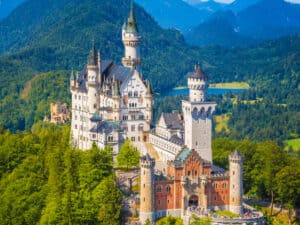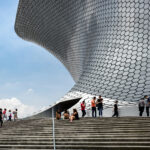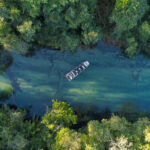Stuttgart is a beautiful city located in the south of Germany and is the capital of the state of Baden-Württemberg. It is known for its rich cultural heritage, beautiful parks, and outstanding architecture. If you only have one day to visit Stuttgart, there is still plenty to see and do. In this travel guide, we will cover the must-visit attractions, things to do, and tips on how to prepare for your visit to Stuttgart.
Contents
Must-See Sights
Stuttgart is a city with many interesting and unique sights to see. If you only have one day to spend in the city, make sure to visit these must-see attractions.
Stuttgart TV Tower
The Stuttgart TV Tower, also known as the Fernsehturm, is an iconic landmark of the city, visible from almost every part of the city. The tower is 217 meters tall, making it the world’s first telecommunication tower made of reinforced concrete.
The Stuttgart TV Tower was built between 1954 and 1956 and was designed by the German architect Fritz Leonhardt. The tower was originally built to provide a better television signal for the region, but it has since become a popular tourist attraction.
Visitors can take an elevator to the top of the tower, where they can enjoy panoramic views of the city and the surrounding region. On a clear day, visitors can see as far as the Black Forest, which is about 60 km away. The observation deck is located 150 meters above ground and is enclosed by glass windows, providing a safe and comfortable experience for visitors.
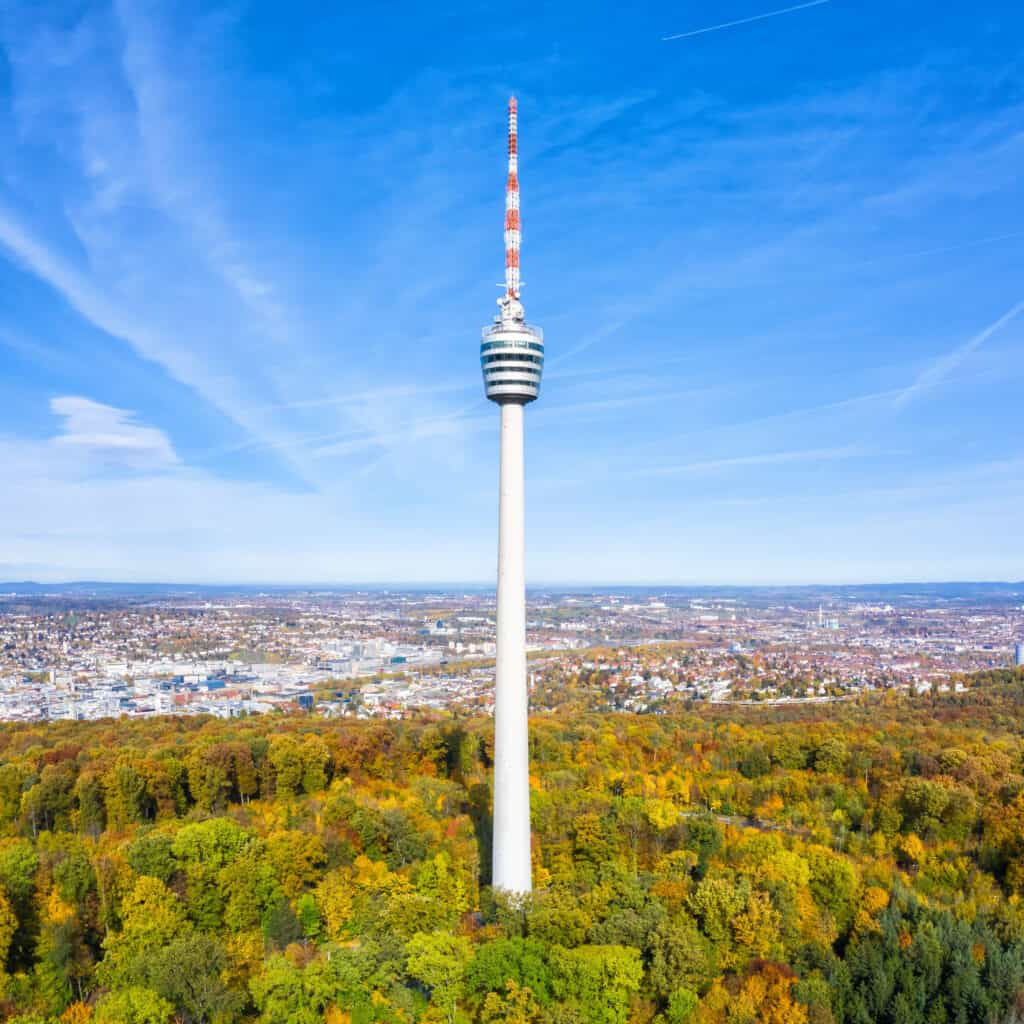
There is also a revolving restaurant at the top of the tower, which offers a unique dining experience with breathtaking views of the city. The restaurant rotates 360 degrees in about an hour, giving visitors a chance to see different parts of the city while enjoying their meal. The restaurant serves traditional German cuisine as well as international dishes, and reservations are recommended.
The Stuttgart TV Tower is open all year round, and the best time to visit is during the day, especially on a clear day when the views are the most spectacular. However, visitors can also visit the tower in the evening to see the city lit up at night.
Schlossplatz
Also known as Palace Square, Schlossplatz is the main square in Stuttgart and located in the city center. The square is surrounded by historic buildings, including the Old Castle and the New Palace, and is one of the most popular spots in the city for both tourists and locals.
Schlossplatz was originally built in the 18th century as a parade ground for the military, but today it is used for public events and festivals. The square is a lively hub of activity, with street performers, cafes, and restaurants offering a variety of entertainment and dining options.
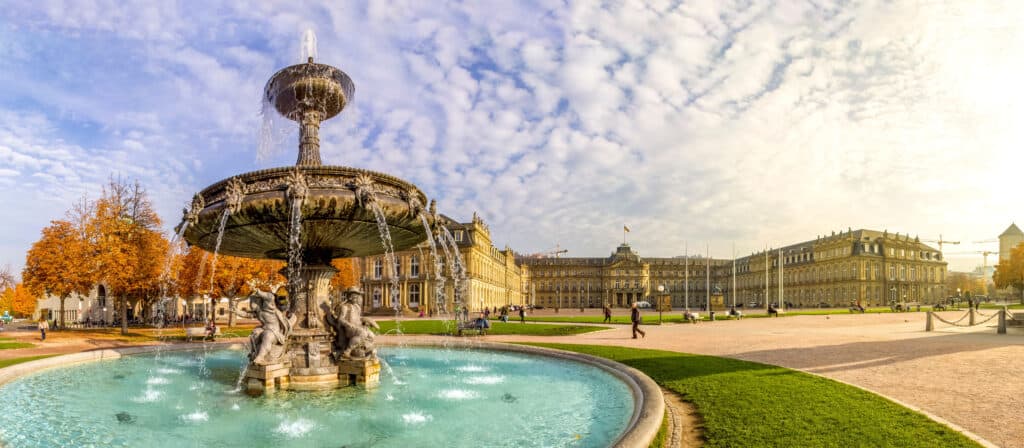
The square is also a great place to relax and people-watch, with plenty of benches and seating areas available. Visitors can sit and enjoy the beautiful fountains, statues, and green spaces that surround the square.
One of the most prominent landmarks on Schlossplatz is the Jubilee Column, a large monument that was erected in 1841 to celebrate the 25th anniversary of King Wilhelm I’s accession to the throne. The monument is over 30 meters tall and is topped with a statue of the goddess Concordia.
During the summer months, Schlossplatz is a popular venue for festivals and events, including the Stuttgart Wine Festival and the Summer Festival. The square is transformed into a vibrant hub of activity, with live music, food and drink stalls, and cultural performances.
Schlossplatz is also home to several museums, including the State Museum of Wurttemberg and the Kunstmuseum Stuttgart, which houses a large collection of modern and contemporary art.
Wilhelma Zoo and Botanical Garden
The Wilhelma Zoo and Botanical Garden is a popular attraction in Stuttgart, offering visitors the opportunity to explore a diverse collection of plants and animals. The zoo and botanical garden is located in a historic palace and park complex, which was originally built in the mid-19th century as a private residence for King Wilhelm I of Wurttemberg.
The zoo is home to over 11,000 animals from around the world, including elephants, giraffes, lions, tigers, and monkeys. The zoo also has a large aquarium, which features a variety of aquatic animals, including sharks, stingrays, and colorful fish. Visitors can see the animals up close and learn about their habitats, behaviors, and conservation efforts.
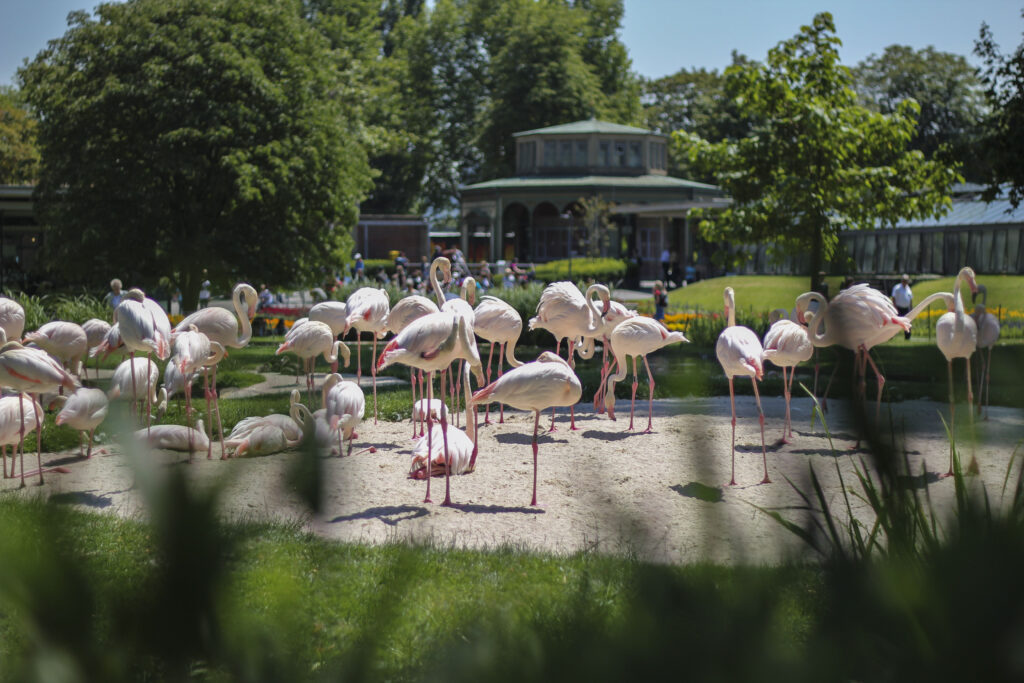
The botanical garden at Wilhelma covers over 30 hectares and features a diverse collection of plants from around the world. The garden is divided into several different sections, including a Mediterranean garden, an Asian garden, and a tropical house. Visitors can see a variety of plant species, including rare and exotic plants, and learn about their cultural and historical significance.
In addition to the zoo and botanical garden, Wilhelma is also home to several historic buildings and monuments, including a greenhouse, a palm house, and a Moorish-style bathhouse. Visitors can explore the palace and park complex, which features beautiful gardens, fountains, and statues.
The Wilhelma Zoo and Botanical Garden is open year-round and is a popular destination for families, nature lovers, and animal enthusiasts. The zoo and garden offer a unique and educational experience, providing visitors with the opportunity to learn about the natural world and conservation efforts.
Mercedes-Benz Museum
The Mercedes-Benz Museum is a must-see attraction in Stuttgart, especially for car enthusiasts. The museum is located in the Bad Cannstatt district of the city and is home to a vast collection of vehicles, exhibits, and memorabilia related to the Mercedes-Benz brand.
The museum is spread over nine floors and features over 160 vehicles, from vintage models to modern sports cars. The collection includes cars, buses, trucks, and racing cars, among others, that showcase the evolution of the Mercedes-Benz brand over the years.
The museum’s exhibits are organized chronologically, and each floor covers a different era in the brand’s history. The exhibits showcase the technological advancements, design innovations, and significant milestones that the company has achieved over the years. Visitors can also learn about the company’s founders and their vision for the brand.
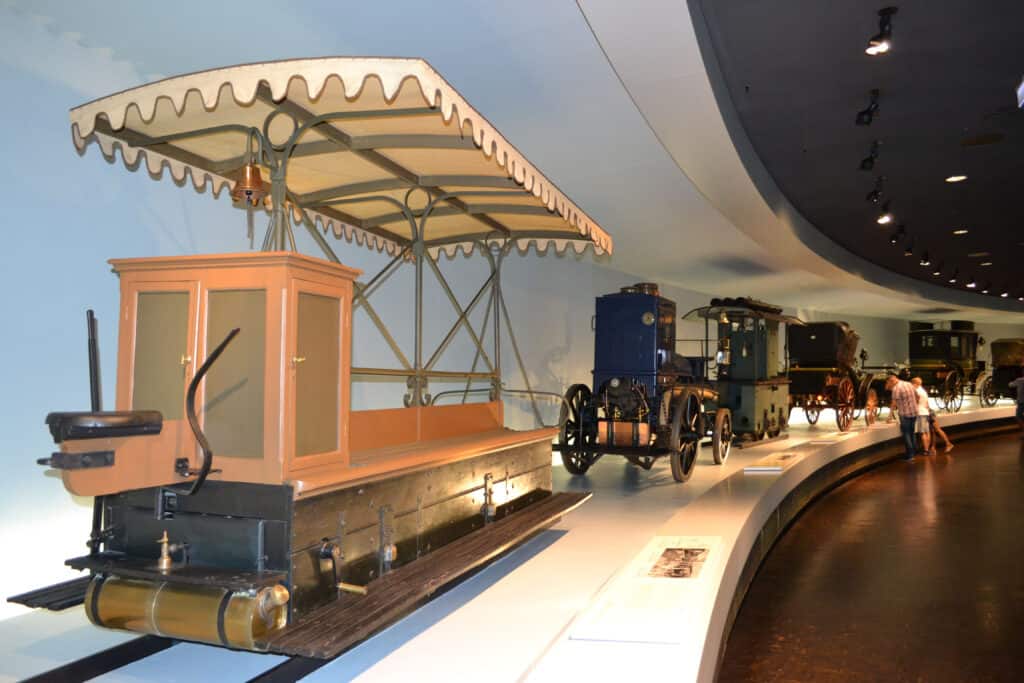
One of the highlights of the museum is the interactive displays and exhibits that allow visitors to experience the brand’s engineering and design features. Visitors can take a simulated ride in a Mercedes-Benz race car, test drive a virtual car, or explore the inside of a car engine.
In addition to the exhibits, the museum also has a restaurant, cafe, and a gift shop where visitors can purchase souvenirs and merchandise related to the brand.
Stuttgart Market Hall (Markthalle)
The Stuttgart Market Hall, or Markthalle, is a popular indoor market located in the city center of Stuttgart. The market is a hub of activity, offering visitors the opportunity to explore a variety of food and drink stalls, as well as local crafts and souvenirs.
The market hall was first established in 1914 and underwent a major renovation in the 1990s. Today, the market features over 30 stalls, offering a diverse selection of products, including fresh produce, meats, cheeses, breads, pastries, and specialty items.
One of the highlights of the market hall is the on-site restaurant, which serves a variety of local and international cuisine. The restaurant is a popular spot for locals and tourists alike, offering a cozy and welcoming atmosphere.
In addition to the food stalls and restaurant, the market hall is also home to several specialty shops, selling a variety of local and artisanal products. Visitors can find handmade soaps, candles, and ceramics, as well as traditional German items such as lederhosen and dirndls.
The market hall is open six days a week and is closed on Sundays. Visitors can explore the market at their leisure, enjoying the lively atmosphere and sampling the local cuisine. The market is a great place to shop for souvenirs or to simply soak up the local culture.
Schlossgarten
The Schlossgarten is a large park located in the heart of Stuttgart, offering visitors a peaceful and scenic escape from the bustling city. The park is a popular destination for locals and tourists alike, featuring expansive lawns, winding paths, and beautiful gardens.
The park was first established in the 18th century and underwent a major renovation in the 19th century, when it was transformed into a formal English-style garden. Today, the park covers over 50 hectares and features a variety of attractions, including fountains, statues, and a large lake.
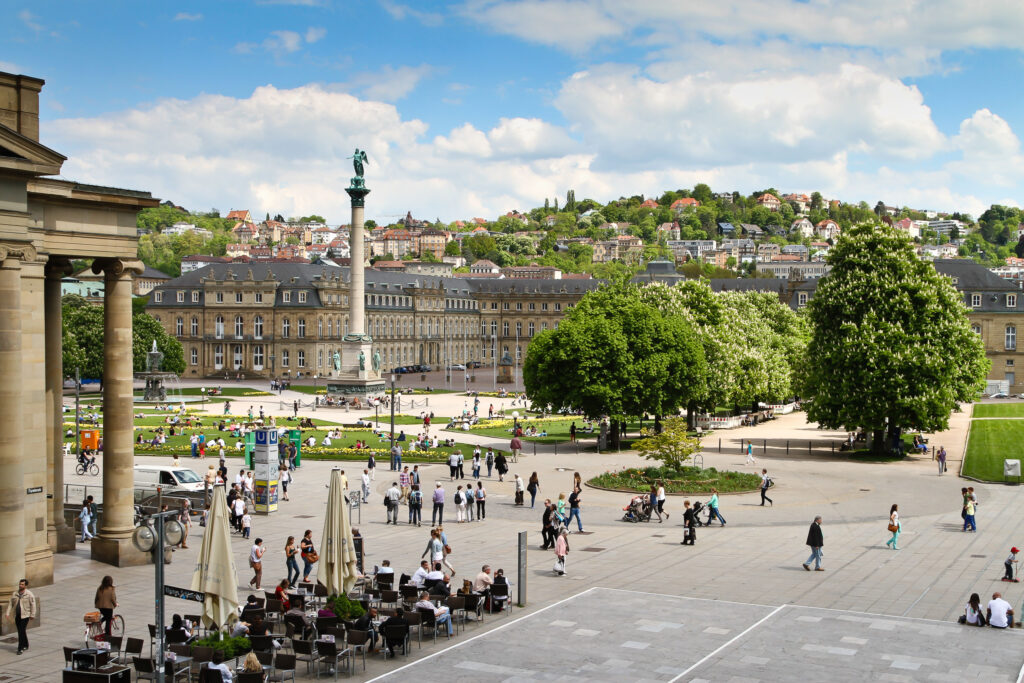
One of the highlights of the Schlossgarten is the Rosenstein Palace, a historic building that now serves as a museum. The palace features a collection of natural history exhibits, including fossils, minerals, and animal specimens. Visitors can explore the museum and learn about the natural history of the region.
The Schlossgarten is also home to several outdoor attractions, including a mini-golf course, a playground, and a beer garden. Visitors can relax on the grassy lawns, go for a jog or bike ride, or simply take in the scenic surroundings.
In the summer months, the Schlossgarten is a popular destination for outdoor events and festivals. Visitors can enjoy live music, theater performances, and cultural events, as well as food and drink stalls.
Killesberg Park
Killesberg Park is a large public park located in the northern part of Stuttgart. The park is a popular destination for locals and tourists alike, offering a wide range of attractions and activities.
The park covers over 50 hectares and features a variety of gardens, lawns, and walking paths. One of the highlights of the park is the Killesberg Tower, a 40-meter observation tower that offers stunning views of the city and the surrounding countryside.
In addition to the tower, the park is home to several other attractions, including a miniature train ride, a large playground, and a variety of sculptures and art installations. The park also hosts a variety of outdoor events and festivals throughout the year, including music concerts, food and drink festivals, and cultural events.

Another popular attraction at Killesberg Park is the Weissenhof Estate, a housing complex that was built in the 1920s as a showcase of modern architecture. The complex features several buildings designed by prominent architects, including Le Corbusier and Mies van der Rohe. Visitors can explore the buildings and learn about the history of modern architecture.
Killesberg Park is also a popular destination for nature lovers and outdoor enthusiasts. The park features a variety of plant and animal species, including several ponds and streams. Visitors can take a relaxing stroll through the park, enjoy a picnic on the grassy lawns, or go for a bike ride along the winding paths.
St. John’s Church (Johanneskirche)
St. John’s Church, also known as Johanneskirche, is a historic church located in the city center of Stuttgart. The church is a popular destination for visitors interested in the history and architecture of the city.
The church was built in the early 20th century and features a stunning neo-Gothic design. The interior of the church is decorated with intricate stained-glass windows and beautiful stone carvings, creating a peaceful and serene atmosphere.
One of the highlights of the church is its impressive pipe organ, which features over 7,000 pipes and is considered one of the finest instruments of its kind in Germany. The church hosts regular organ concerts, providing visitors with a unique and memorable cultural experience.
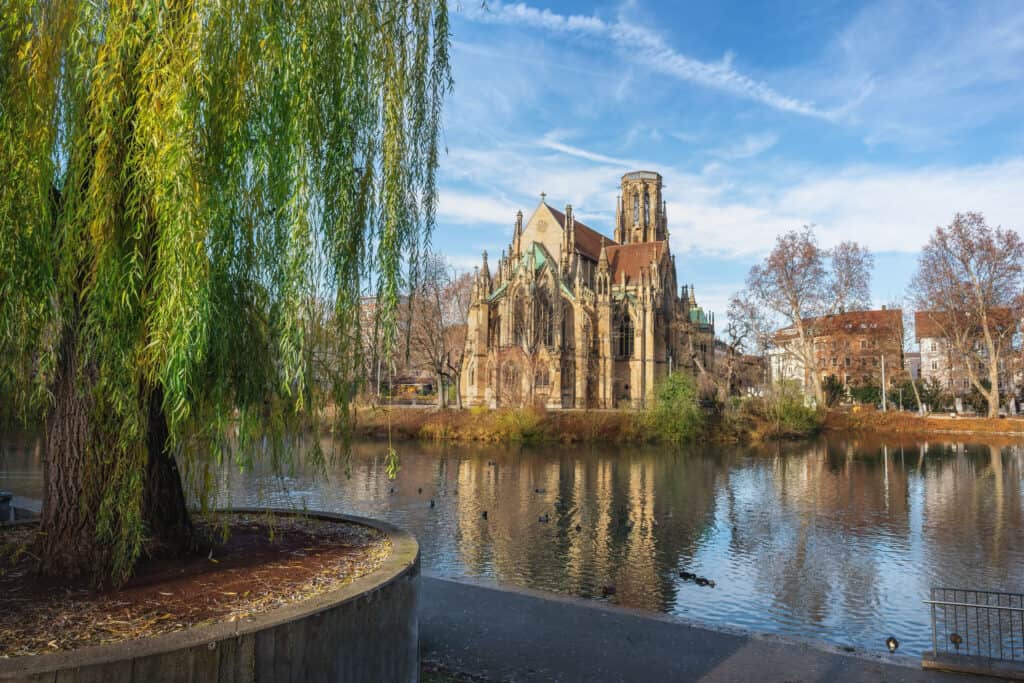
St. John’s Church is also home to several important religious artifacts, including a 14th-century wooden sculpture of the Madonna and Child, as well as several historic tapestries and paintings.
Visitors can attend a religious service at the church or simply admire the stunning architecture and interior design. The church is open to visitors throughout the year and is a popular destination for tourists interested in the history and culture of the region.
Stuttgart State Opera (Staatsoper Stuttgart)
The Stuttgart State Opera, also known as the Staatsoper Stuttgart, is a world-renowned opera house located in the city center of Stuttgart. The opera house is considered one of the premier opera houses in Germany and is a must-visit destination for anyone interested in music and the performing arts.
The Stuttgart State Opera was first established in the 17th century and has undergone several renovations and expansions over the centuries. Today, the opera house features a stunning modern design, with a glass facade that reflects the surrounding cityscape.
The opera house hosts a variety of performances throughout the year, including operas, ballets, and classical music concerts. The productions are performed by a talented and renowned company of singers, dancers, and musicians, and the performances are known for their high quality and artistic excellence.

Visitors can attend a performance at the Stuttgart State Opera and experience the beauty and power of live opera and ballet. The opera house also offers tours of the building, providing visitors with a behind-the-scenes look at the inner workings of the opera house and the technical aspects of producing a live performance.
In addition to the performances, the Stuttgart State Opera also hosts a variety of events and activities, including lectures, workshops, and special performances for children and families.
Art and Culture
Stuttgart is a city that is rich in art and culture, with a variety of museums, galleries, and cultural events that offer visitors a unique and immersive experience.
Here are some of the best art and culture attractions in Stuttgart:
State Gallery of Stuttgart
The State Gallery of Stuttgart, also known as the Staatsgalerie Stuttgart, is one of the most important art museums in Germany. The museum is located in the heart of the city and houses a vast collection of artworks from the 14th century to the present day.
The museum’s collection is divided into three sections: Old Masters, Modern Art, and Contemporary Art. The Old Masters collection features works from the Renaissance to the Baroque period, including paintings by artists such as Hans Holbein the Elder, Albrecht Durer, and Peter Paul Rubens.
The Modern Art section of the museum features works from the 19th and 20th centuries, including paintings, sculptures, and installations. Visitors can see works by artists such as Vincent van Gogh, Claude Monet, and Pablo Picasso.

The Contemporary Art section of the museum features works from the 1960s to the present day, including installations, photography, and video art. Visitors can see works by artists such as Gerhard Richter, Anselm Kiefer, and Rebecca Horn.
The museum also has a vast collection of prints and drawings, including works by Rembrandt, Francisco Goya, and William Blake. In addition, the museum features temporary exhibitions throughout the year, showcasing works by emerging and established artists.
The State Gallery of Stuttgart is also home to a large library and an auditorium, which hosts lectures, concerts, and other events. The museum has a cafe and a restaurant on site, where visitors can relax and enjoy refreshments.
Kunstmuseum Stuttgart
The Kunstmuseum Stuttgart is one of the premier art museums in Germany, and is a must-visit destination for anyone interested in contemporary art. The museum is located in the city center of Stuttgart, and features a stunning modern design that is a work of art in itself.
It is dedicated to modern and contemporary art from the 1950s to the present day, and features a variety of works by German and international artists. The collection includes painting, sculpture, and installation art, as well as photography, video, and digital art.
One of the museum’s most notable works is the “Kugelkaryatide” by American artist Tony Cragg, a monumental sculpture made of stacked spheres that stands outside the museum entrance. The sculpture is an iconic symbol of the museum and the city of Stuttgart.
 EdgarJa / flickr.com | CC BY-SA 2.0
EdgarJa / flickr.com | CC BY-SA 2.0The museum’s permanent collection includes works by artists such as Joseph Beuys, Gerhard Richter, and Anselm Kiefer, as well as several important contemporary artists. The museum also hosts temporary exhibitions throughout the year, featuring works by emerging and established artists.
In addition to its exhibitions, the Kunstmuseum Stuttgart also offers a variety of educational programs, including lectures, workshops, and guided tours. The museum is committed to engaging with its visitors and promoting a deeper understanding and appreciation of contemporary art.
Stuttgart Ballet
The Stuttgart Ballet is one of the world’s leading ballet companies, renowned for its innovative and groundbreaking productions. Founded in 1961, the company has a long and storied history, and has played a major role in the development of modern ballet.
Under the leadership of acclaimed choreographer John Cranko, the Stuttgart Ballet became known for its dramatic and emotionally charged productions, which broke with the traditional formalism of classical ballet. Cranko’s works, such as “Romeo and Juliet” and “Onegin,” helped to establish the company’s reputation as a trailblazer in the world of ballet.
Today, the Stuttgart Ballet continues to push the boundaries of dance, staging a variety of classical and contemporary works. The company performs a wide range of productions, from classic ballets such as “Swan Lake” and “The Nutcracker,” to innovative and experimental works by contemporary choreographers.
The company is known for its strong ensemble work, and has produced several world-renowned dancers, including Marcia Haydée, Richard Cragun, and Friedemann Vogel. The Stuttgart Ballet’s dancers are known for their technical virtuosity and emotional intensity, and have received critical acclaim for their performances around the world.
In addition to its regular performances, the Stuttgart Ballet also offers a variety of educational programs and community outreach initiatives. These programs are designed to engage with local audiences and to promote a deeper understanding and appreciation of dance.
Schauspiel Stuttgart
The Schauspiel Stuttgart is one of Germany’s leading theaters, renowned for its innovative and thought-provoking productions. The theater was founded in 1909 and has since played a major role in the development of German theater.
The Schauspiel Stuttgart stages a wide range of productions, from classic plays by Shakespeare and Goethe to contemporary works by leading playwrights. The theater is known for its daring and provocative productions, which often challenge traditional theatrical conventions and explore complex and controversial themes.
The theater has a strong ensemble of actors, many of whom have gained national and international recognition for their work. The ensemble works closely with the theater’s artistic director, Burkhard C. Kosminski, to create productions that are intellectually challenging and emotionally resonant.
One of the Schauspiel Stuttgart’s most notable productions in recent years was “Gott,” a play by Ferdinand von Schirach that explored the nature of faith and the role of religion in contemporary society. The production was highly acclaimed and received several awards.
The Schauspiel Stuttgart also offers a variety of educational programs and outreach initiatives, designed to engage with local audiences and to promote a deeper understanding and appreciation of theater. These programs include workshops, seminars, and special events, as well as collaborations with local schools and community organizations.
Stuttgart Festival of Animated Film
The Stuttgart Festival of Animated Film, also known as the ITFS (International Trickfilm Festival Stuttgart), is one of the most prestigious and respected animation festivals in the world. Founded in 1982, the festival is held annually in Stuttgart, and attracts thousands of visitors from around the globe.
The ITFS showcases a wide variety of animation styles, including traditional hand-drawn animation, computer-generated imagery (CGI), and stop-motion animation. The festival features a diverse range of programs, including feature-length films, short films, and student films, as well as special screenings, workshops, and lectures.
The festival has a long-standing commitment to promoting emerging talent in the animation industry. Each year, the festival hosts an international competition for student films, which gives young animators from around the world the opportunity to showcase their work on a global stage. The festival also features an award for the best animated series, which recognizes innovative and groundbreaking television shows.
In addition to its film screenings and competitions, the ITFS is also known for its lively and engaging atmosphere. The festival features a wide variety of events and activities, including industry panels, Q&A sessions with filmmakers, and exhibitions of animation-related artwork.
The Stuttgart Festival of Animated Film has a strong reputation for promoting creativity and innovation in the field of animation. The festival attracts some of the most talented animators and filmmakers from around the world, and has helped to launch the careers of many notable figures in the industry.
Jazz Open Stuttgart
Jazz Open Stuttgart is an annual music festival that takes place in the heart of Stuttgart. The festival has a long history and was first launched in 1994. Since then, it has become one of the most important music festivals in Germany and has attracted world-renowned jazz musicians from all over the world.
The festival features a wide range of music styles, including jazz, soul, and funk. The program is carefully curated to showcase the best of contemporary jazz music, with an emphasis on innovative and experimental music.
The festival takes place over several days and features a range of indoor and outdoor venues. Some of the most iconic locations in Stuttgart serve as stages for the festival, including the Schlossplatz and the Jazz Club Bix.
Over the years, Jazz Open Stuttgart has welcomed many of the biggest names in jazz, such as Herbie Hancock, Wayne Shorter, and Diana Krall. The festival also provides a platform for emerging artists, with a special focus on local musicians from the Stuttgart area.
The festival has a vibrant and inclusive atmosphere, with a diverse audience that includes both jazz enthusiasts and casual music fans. The festival also offers a range of activities, such as workshops and masterclasses, which provide a unique opportunity to learn from some of the most talented musicians in the world.
Typical Costs
The cost of a day trip to Stuttgart can vary depending on your budget and the activities you choose to do. Here are some typical costs to give you an idea of what to expect:
| Expense | Luxury Cost | Mid-Range Cost | Budget Cost |
|---|---|---|---|
| Accommodation | 150-250 EUR per night | 80-120 EUR per night | 30-50 EUR per night |
| Transportation | 50-80 EUR private car rental 20-30 EUR for a taxi | 3-5 EUR for a single local bus/tram ticket 10-15 EUR for a day ticket | 2-3 EUR for a single local bus/tram ticket 7-10 EUR for a day ticket |
| Food | 30-50 EUR fine dining restaurant meal | 8-15 EUR for a mid-range restaurant meal 5-8 EUR for a street food or a quick snack | 3-5 EUR for a street food or a quick snack 8-12 EUR for a simple meal |
| Attractions | 30-40 EUR private tour or VIP access 10-15 EUR per person for most museums and galleries | 10-15 EUR per person for most attractions 5-8 EUR for some parks or gardens | 5-10 EUR per person for most attractions 2-3 EUR for some parks or gardens |
Again, these are rough estimates and prices may vary depending on a variety of factors. It’s always a good idea to do your research and plan your budget accordingly.
Again, these are rough estimates and prices may vary depending on a variety of factors. It’s always a good idea to do your research and plan your budget accordingly.
Nightlife
Stuttgart has a vibrant nightlife scene that caters to a range of tastes and interests. Whether you’re in the mood for a quiet drink or an all-night party, you’re sure to find something that suits your style.
Here are some of the best places to experience the nightlife in Stuttgart:
Rooftop Bars
Stuttgart has a vibrant nightlife scene with many great rooftop bars where you can enjoy a drink and take in stunning views of the city.
One thing to keep in mind is that rooftop bars in Stuttgart can be very popular, especially during the summer months. It’s a good idea to arrive early to avoid long lines and ensure that you get a good spot with a view. Additionally, some rooftop bars may have dress codes, so it’s a good idea to check before you go to avoid any surprises.
Sky Beach – Located on the roof of the Sky Beach building, this rooftop bar is a popular spot for locals and visitors alike. With its sandy floor, lounge chairs, and tropical drinks, it’s easy to forget that you’re in the middle of a city. The views of Stuttgart from here are absolutely stunning, especially at sunset.
CUBE – Situated on the top floor of the Stuttgart Art Museum, CUBE is a trendy bar that offers panoramic views of the city. The bar has a modern and chic atmosphere, with sleek decor and a menu that features a range of cocktails and craft beers.
Amici – This Italian restaurant and bar is located on the top floor of the Milaneo shopping center and offers amazing views of the city. The menu features a range of Italian dishes, including wood-fired pizzas and fresh pasta, and the bar has an extensive wine list.
7grad – Located on the seventh floor of the Gerber shopping center, 7grad is a popular rooftop bar that offers a relaxed atmosphere and great views of the city. The bar serves a range of craft beers and cocktails, and the menu features a range of small plates and snacks.
Teehaus – This rooftop bar is located on the top floor of the Teehaus building and offers stunning views of the city. The bar has a cozy atmosphere and is a great spot to enjoy a drink and take in the views.
Party and Nightclubs
Stuttgart has a diverse nightlife scene, with plenty of bars and nightclubs to suit all tastes. Here are some of the best places to go for a night out in Stuttgart:
Perkins Park – This club is one of the most popular in Stuttgart, with multiple floors and rooms playing different types of music. The club has a stylish and modern atmosphere, with high ceilings, large windows, and an outdoor terrace. It’s a great place to dance the night away and enjoy a few drinks with friends.
Lehmann Club – This club is known for its eclectic music selection, with DJs spinning everything from techno to hip-hop. The club has a cool and underground vibe, with brick walls, graffiti, and an intimate dance floor. It’s a great place to discover new music and dance until the early hours of the morning.
Kowalski – This club is known for its electronic music and has a spacious dance floor and outdoor terrace. The club has a sleek and modern design, with a large bar and plenty of seating. It’s a great place to catch live DJs and enjoy a night out with friends.
Barbee – This bar is located in the heart of Stuttgart and is known for its cocktails and relaxed atmosphere. The bar has a chic and stylish design, with plush seating and low lighting. It’s a great place to start the night with a few drinks and catch up with friends.
Mata Hari Bar – This bar is located in the bohemian neighborhood of Stuttgart-West and is known for its cozy atmosphere and craft cocktails. The bar has a vintage-inspired design, with a low-lit interior and antique decor. It’s a great place to escape the hustle and bustle of the city and enjoy a few drinks in a relaxed setting.
How to get around
Stuttgart is a very well-connected city with a range of transportation options to suit any traveler’s needs. Whether you prefer to take the train, bus, or bike, there are plenty of ways to get around and explore all that Stuttgart has to offer.
Trains
The Stuttgart S-Bahn is a network of commuter trains that run throughout the city and the surrounding area. The S-Bahn is a great way to get around quickly and efficiently, with trains running every 10-20 minutes during peak hours.
Buses
The bus system in Stuttgart is also very extensive, with a network of over 50 different bus lines that serve the city and the surrounding area. Buses run frequently and are a good option for getting to areas that are not covered by the S-Bahn.
U-Bahn
The Stuttgart U-Bahn is a rapid transit system that serves the city and the surrounding area. The U-Bahn consists of four lines and is a great way to get around quickly and efficiently.
Taxis
Taxis are widely available in Stuttgart and are a good option for getting around quickly, especially if you are traveling with a group or have heavy luggage.
Bicycles
Stuttgart has an extensive network of bike paths and is a very bike-friendly city. There are many places to rent bicycles, including bike-sharing programs and rental shops.
Walking
Many of the main attractions in Stuttgart are located within walking distance of each other, especially in the city center. Walking is a great way to explore the city and take in the sights at your own pace.
How to get there
| Departure City | Distance (km) | Distance (mi) | By Car (h) | By Train (h) | By Bus (h) |
|---|---|---|---|---|---|
| Berlin | 640 | 398 | 6 | 5-6 | 10-12 |
| Cologne | 350 | 217 | 3.5 | 2-3 | 4-5 |
| Frankfurt | 200 | 124 | 2 | 1-1.5 | 2-3 |
| Hanover | 460 | 286 | 4.5 | 3-4 | 7-8 |
| Hamburg | 670 | 416 | 6.5 | 5-6 | 9-10 |
| Munich | 220 | 137 | 2.5 | 2-2.5 | 3-4 |
Please note that these travel times are estimates and may vary depending on factors such as traffic, road conditions, and mode of transportation. It’s always a good idea to check schedules and plan ahead when traveling to ensure a smooth and stress-free journey.




